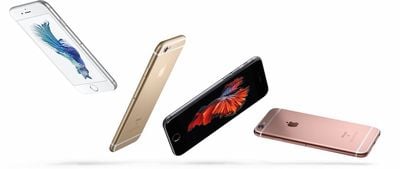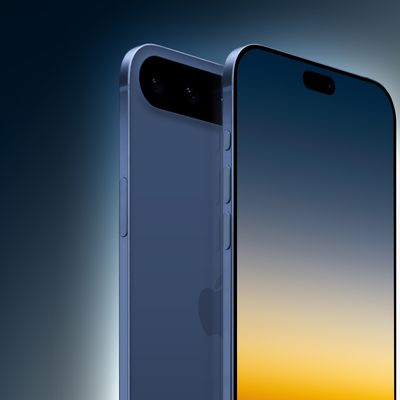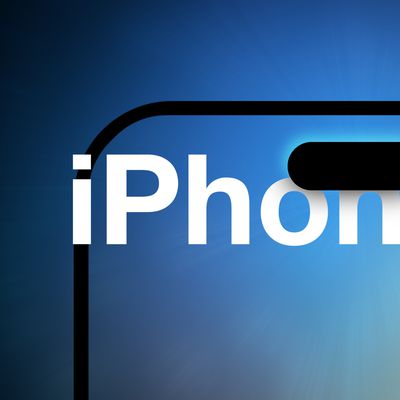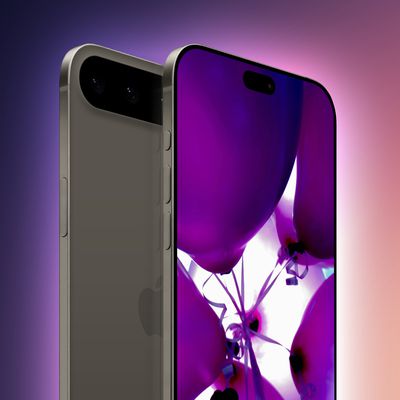5.8-Inch iPhone With OLED Display Rumored for Launch in 2017 or 2018
Apple is rumored to be further expanding the iPhone's screen size beyond the current 5.5-inch iPhone 6s Plus, moving to 5.8 inches in a future device that could launch "in 2018 or even earlier in 2017." The news comes from a pre-publication report by DigiTimes that has been obtained by The Motley Fool, and it states that the 5.8-inch iPhone will include an OLED display, in line with previous rumors of Apple adopting the technology around that time.
According to the report, Samsung is to be the main source for the OLED panels, with LG and Japan Display "joining in later." Recently, Samsung was reported to be on the verge of investing over $7 billion into supplying OLED displays for future iPhones, following rumors last year that 2018 would mark Apple's official shift from LCD to OLED displays in its popular smartphone line. More recent reports suggest that OLED timeline could be moved up to 2017.

Based on DigiTimes' estimates, the production of OLED displays could see significant output within the first year, though still only a fraction of the over 200 million iPhones Apple sold over the past year.
Per the note, DIGITIMES' supply chain sources believe that 50 million of these AMOLED-equipped iPhones will make it out to customers in the first year of availability.
The company's upcoming March media event is rumored to showcase the launch of a new 4-inch "iPhone SE," but as of yet there have been few rumors suggesting the company has looked into expanding the already-large screen of the iPhone 6s Plus. With the rumored launch dates of 2017 or 2018, if it becomes a reality, the 5.8-inch OLED iPhone could arrive as either an "iPhone 7s" or more likely an "iPhone 8" generation.
Recent rumors surrounding this year's iPhone 7 and iPhone 7 Plus have indicated the device will adopt a thinner body, flush rear camera, and stereo speakers, while also doing away with the traditional 3.5-mm headphone jack. A dual-lens rear camera has also been rumored for at least some models of the larger iPhone 7 Plus, with one report claiming those models could be launched under a separate "iPhone Pro" name.
Popular Stories
Following nearly two years of rumors about a fourth-generation iPhone SE, The Information today reported that Apple suppliers are finally planning to begin ramping up mass production of the device in October of this year. If accurate, that timeframe would mean that the next iPhone SE would not be announced alongside the iPhone 16 series in September, as expected. Instead, the report...
Key details about the overall specifications of the iPhone 17 lineup have been shared by the leaker known as "Ice Universe," clarifying several important aspects of next year's devices. Reports in recent months have converged in agreement that Apple will discontinue the "Plus" iPhone model in 2025 while introducing an all-new iPhone 17 "Slim" model as an even more high-end option sitting...
Apple supply chain analyst Ming-Chi Kuo today shared alleged specifications for a new ultra-thin iPhone 17 model rumored to launch next year. Kuo expects the device to be equipped with a 6.6-inch display with a current-size Dynamic Island, a standard A19 chip rather than an A19 Pro chip, a single rear camera, and an Apple-designed 5G chip. He also expects the device to have a...
Apple typically releases its new iPhone series around mid-September, which means we are about two months out from the launch of the iPhone 16. Like the iPhone 15 series, this year's lineup is expected to stick with four models – iPhone 16, iPhone 16 Plus, iPhone 16 Pro, and iPhone 16 Pro Max – although there are plenty of design differences and new features to take into account. To bring ...
Apple’s iCloud Private Relay service is down for some users, according to Apple’s System Status page. Apple says that the iCloud Private Relay service may be slow or unavailable. The outage started at 2:34 p.m. Eastern Time, but it does not appear to be affecting all iCloud users. Some impacted users are unable to browse the web without turning iCloud Private Relay off, while others are...
Apple is planning to release at least one iPhone 17 model next year with mechanical aperture, according to a report published today by The Information. The mechanical system would allow users to adjust the size of the iPhone 17's aperture, which refers to the opening of the camera lens through which light enters. All existing iPhone camera lenses have fixed apertures, but some Android...





















